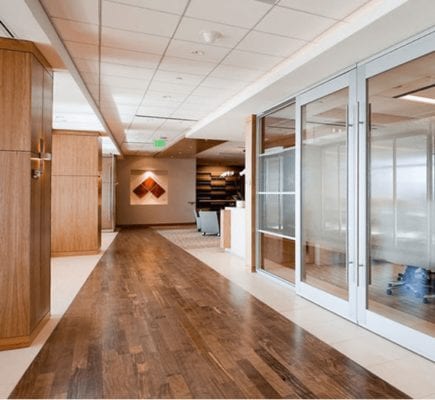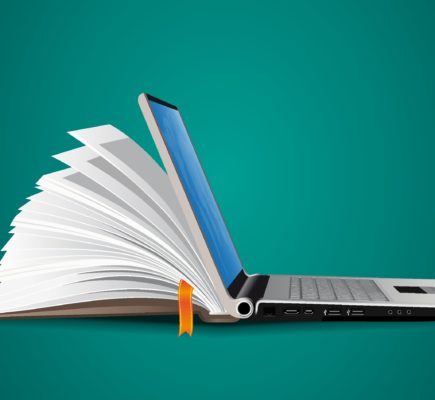
Last week, in the first post of my three-part blog, I introduced you to the concept of the Digital Records and Information Process (DRIP) and why it’s so valuable in our remote work world. This week, in part 2, I explore our rich history of paper, how far we’ve come today and why it’s so difficult for many of us to become true DRIP converts.
For the Love of Paper
Somewhere… back in a remote corner of our dark corporate offices… sits the water cooler, our once familiar desk, the coffee mug that probably needs to be thrown away since we left it half full about a year ago today. And paper. Tons of paper sitting around on desks, in file cabinets, file rooms, boxes, drawers, and everywhere else. Paper has also likely been squirreled away in off-site storage…hidden away for safekeeping so it can one day be recalled and restored to its special coveted place on our desk, on the shelf and in our hearts. You get the point.
The Days of Yore
The traditional model that we built once upon a time – supporting documents, records and information -was based on an office where we generated, accumulated, distributed, and relied upon paper that we could go down the hall and retrieve. To paraphrase someone who did it all in longhand on papyrus, there, my friends, is the rub that must make cowards of us all…to store, to file, no more.
Fast forward to today’s reality. Here we all are…working from home, either content that we have what we need, available when we need it, or longing for office access so we can get back to “normal” and function properly (whatever you do…do not grab that old coffee cup).
However, while some of us have those options, there are others not given the choice. They are sitting in poorly lit offices, amongst the files, waiting for someone to request their help. There is a courier on call, or a multi-function copier close by, so the document or file can be scanned and e-mailed. We have created a society of “mechanical Turks” operating invisibly within boxes, boxes that are otherwise empty offices.
The Holy Grail of the Digital Original
There are a few critical components to move from a hybrid physical/electronic records program to DRIP – a fully digital process. There is inherent complexity to this, of course, in which all of the interdependent pieces must align. Records management is about consistency, after all.
The first challenge is that the digital record must become the official record. In many organizations, electronic documents are still considered convenience copies, and the physical, hard copy records are maintained as the official records. This is largely psychological at this point because the process should really be the other way around today. However, the adoption of electronic records as official versions is happening… just gradually. With rare exception, the regulating bodies for document authenticity, such as Courts and Auditors, recognize electronic records as official with no requirement to maintain the physical version.
More importantly, most modern information processes generate a digital original, complete with authentication, which may be a digital signature. Signatures are another relic of our paper dependence, which, unfortunately, we may still cling to as the highest standard of identify verification.
The Not-so-Foolproof Method
We know from the time we learned to sign a note from our parents in school (I’ve only heard about this). That this is not a foolproof system. And do you really believe that anyone is verifying your scribbled signature when you are shopping? Not so much. This step is largely managed by chips and other more sophisticated methods of unique identification and verification.
So how do we move forward? We must separate day-forward processes from the sins of the past. There was a time when packing boxes and sending them to storage made sense. And there are instances when it still might. However, this is no longer a good regular practice in the normal course of business. It is a habit to break and propel forward from. Once you address the day forward model and eliminate the perpetuation of the problem, you can then go back and address the legacy situation.
With day-forward process, the goal is to create and retain documents in a digital format using well-governed electronic repositories. These repositories integrate the complete information process. This means that Line of Business systems should connect to the Systems of Engagement and Content Collaboration and Content Service platforms, along with the ability to archive and electronically store them until retention and disposition are met.
But let’s face it…a look around most offices reveals how persistent paper dependency remains. And the same issue exists for electronic information. Electronic information has proliferated in share drives, thumb drives, decommissioned applications, email inboxes, the cloud, and innumerable applications that provide the ability to both generate and store electronic information without standards or proper governance.
It is time to re-invent the entire records process with DRIP and an acknowledgement of how information is created and how it flows through an organization most efficiently. Then build the system accordingly. Records Management designed around physical records has served us well in the past, but it cannot be expected to solve digital issues and move us forward into process nirvana. What we might be surprised to find, though, is that in letting go of our paper dependence, we find the answer to transition to digital processes.
If everyone now working from home can access the right record, when they need it, as an authentic version, with the ability to store it safely and securely so it can be available to retrieve until it meets its disposition purpose and obligation, we have succeeded.
If you’d like to learn more about DRIP, read Part 1 of this blog series, or simply continue learning about it next week when I publish the last of my 3-part blog series on the topic!




